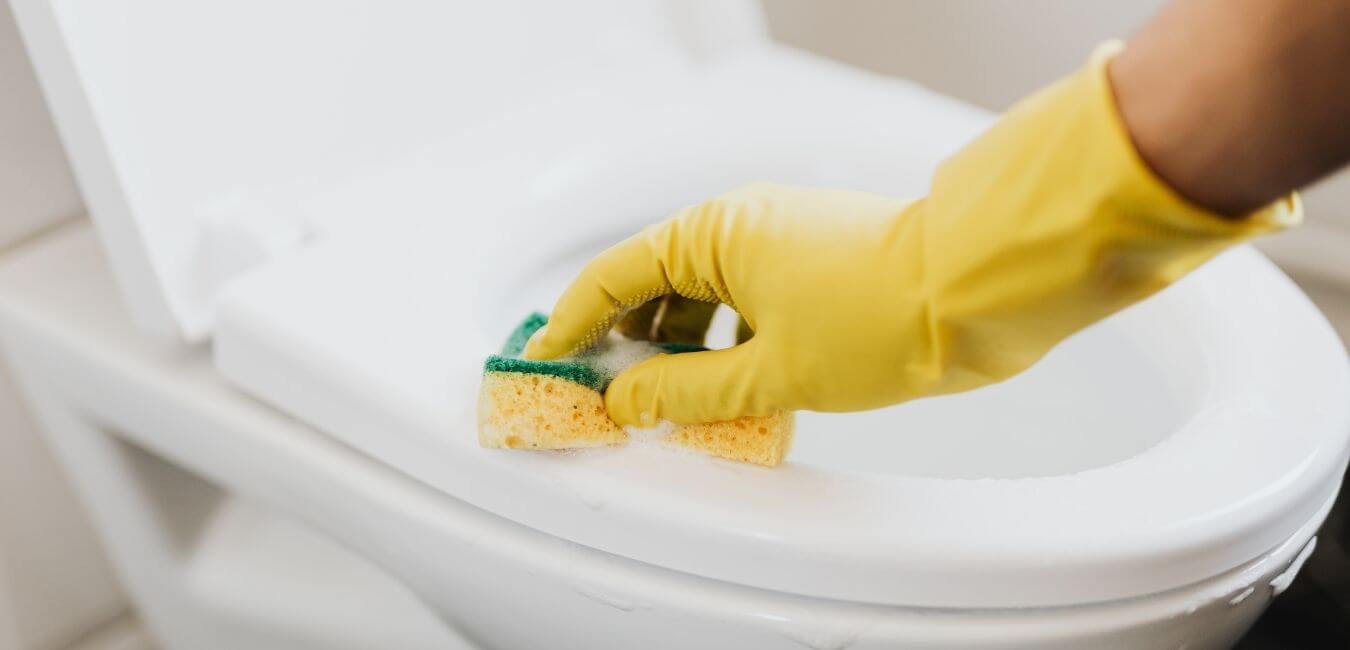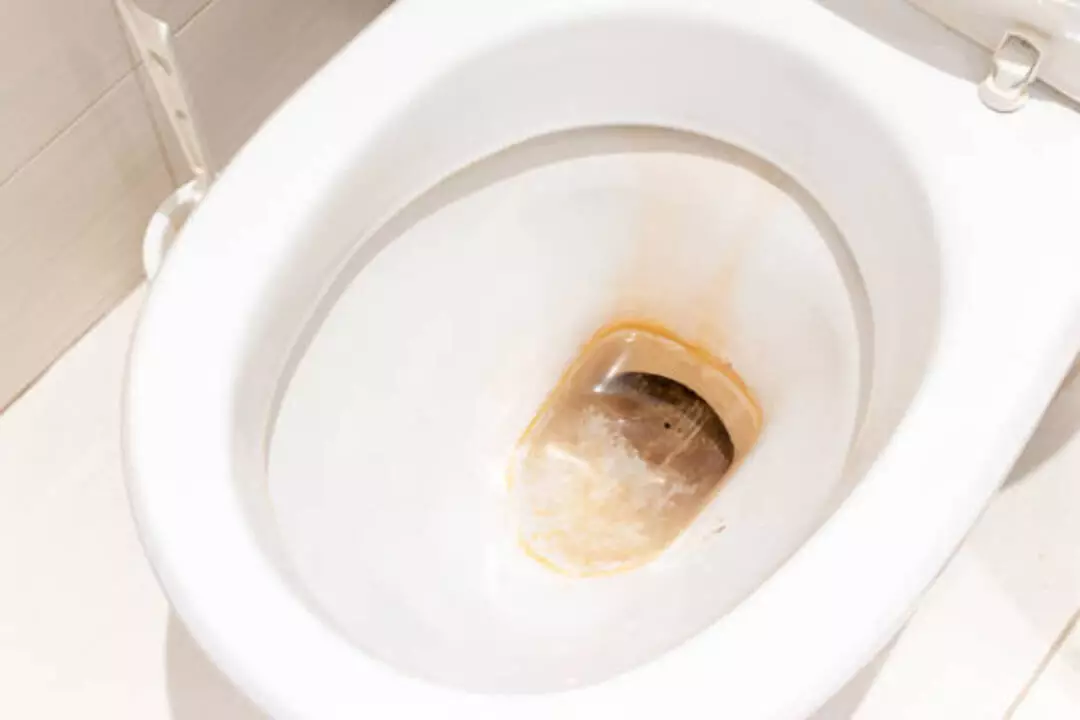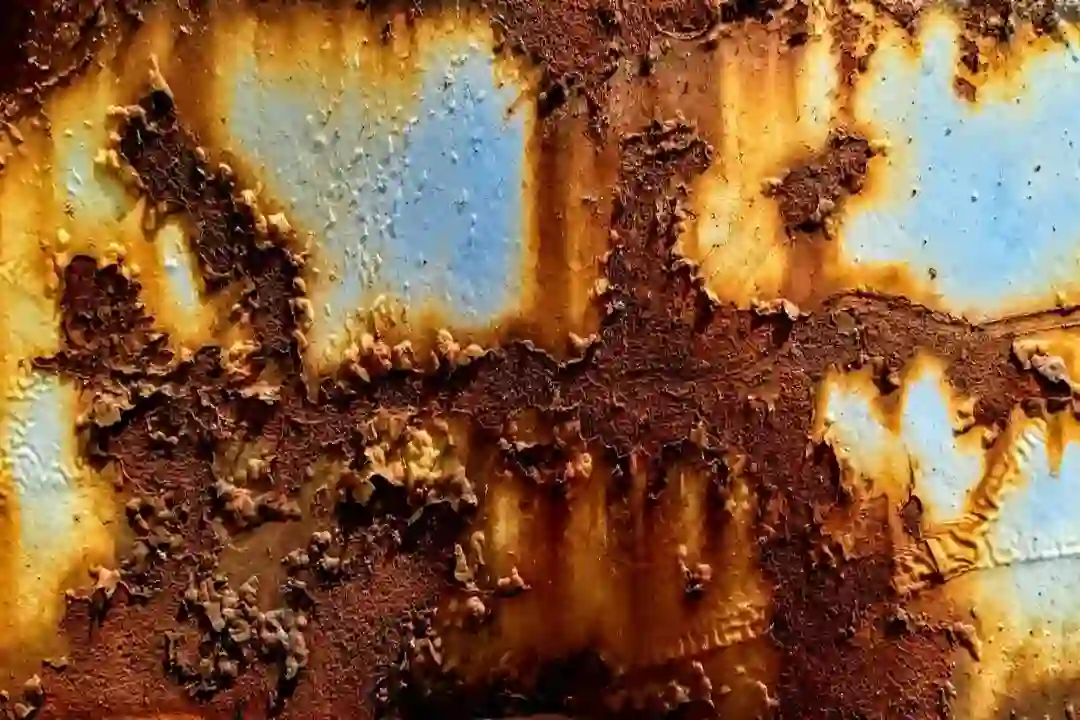Grout stains can be a stubborn problem in our homes, especially when they are caused by urine. Whether it’s from toilet mishaps or pet accidents, urine not only discolors grout but also leaves a lingering odor that’s hard to eliminate.
This blog post gives you an effective step-by-step guide on how to remove pesky urine stains from grout and restore its pristine appearance. Let’s get started and transform your bathroom into the cleanest room in the house!
KEY INFORMATION
- Urine stains on grout can be stubborn, but they can be effectively removed with the right methods.
- Factors to consider when removing urine stains include the type of grout, how long the stain has been present, and the cleaning products to use.
- Effective methods for removing urine stains from grout include using a vinegar and water mixture, applying a baking soda paste, and scrubbing with a toothbrush.
- Preventive measures such as regular maintenance and prompt cleanup of accidents can help prevent urine stains from setting into the grout.
Factors to Consider When Removing Urine Stains from Grout

When removing urine stains from grout, there are several factors you need to consider.
1. Type of grout
Grout comes in two types. One is sanded, the other is non-sanded. Sanded grout has sand in it. It fills up wide spaces between tiles. Non-sanded grout does not have sand and suits small gaps between tiles.
The type of grout tells you what cleaner to use. You need a soft brush for non-sanded grout so as not to scratch or damage it.
2. The length of time the stain has been present
The length of time the urine stain has been on your grout can affect how difficult it is to remove. If the stain is relatively new, it may be easier to clean compared to an old, set-in stain.
It’s important to address urine stains as soon as possible to prevent them from becoming more stubborn and causing further damage. The longer the stain has been present, the deeper it may have penetrated into the grout, making removal more challenging.
However, with the right cleaning techniques and products, even old stains can be successfully eliminated. So don’t worry if you’ve discovered a long-standing urine stain on your bathroom grout – there are effective methods available for removing it.
3. Cleaning products to use
To effectively remove urine stains from grout, it’s important to use the right cleaning products. One effective option is a mixture of equal parts vinegar and water. This natural solution helps break down the stains and eliminate odors.
Another option is using an enzyme digester, which can be sprayed directly onto the stains to break them down and remove them more easily. For tougher stains, stronger solutions like bleach or vinegar may be needed, but make sure to test them in a small, hidden area first to avoid discoloration or damage.
Additionally, creating a paste-like mixture using hydrogen peroxide and an oxygenated powder product like OxiClean can help lift stubborn stains from grout surfaces. Remember to always follow safety precautions when working with these cleaning products.
4. Safety precautions
To ensure your safety while removing urine stains from grout, there are a few important precautions to keep in mind. First, always wear protective gloves to avoid direct contact with any cleaning products or solutions.
Second, when using strong cleaners like bleach or vinegar, make sure the area is well-ventilated by opening windows or turning on fans. This will help minimize fumes and prevent any respiratory irritation.
Lastly, be cautious when scrubbing the stained areas to avoid causing damage to the grout. Use gentle pressure and a soft brush or toothbrush to avoid scratching or chipping the surface.
Step-by-Step Guide for Removing Urine Stains from Grout

Follow these simple steps to effectively remove urine stains from grout and restore the cleanliness of your bathroom.
1. Gather necessary supplies
To effectively remove urine stains from grout, it’s important to gather the right supplies. You’ll need some protective gloves, vinegar, water, a spray bottle, a brush or toothbrush for scrubbing, baking soda paste, and a mop.
These items will help you tackle the stains and clean your bathroom floors thoroughly. Make sure to have everything ready before starting the cleaning process so that you can work efficiently.
2. Wear protective gloves
When removing urine stains from grout, it is important to wear protective gloves. This will help prevent any direct contact with the cleaning solutions and protect your hands from potential skin irritation or damage.
Gloves also provide a barrier against any harmful bacteria that may be present in the urine. By wearing gloves, you can safely and effectively clean the stained areas without putting your health at risk.
3. Create a vinegar and water mixture
To create a vinegar and water mixture, you will need equal amounts of vinegar and water. Mix them together in a spray bottle or a bowl. This solution can be used to remove urine stains from grout.
Vinegar is known for its natural cleaning abilities, and when mixed with water, it becomes an effective cleaner for removing stains.
4. Spray the mixture onto the stains
To remove urine stains from the grout, spray the vinegar and water mixture directly onto the stains. Make sure to cover the affected areas thoroughly. This solution helps to break down and lift the stains for easier removal.
Let it sit for a few minutes before moving on to scrubbing with a brush. The vinegar’s acidic properties work to dissolve the stubborn urine deposits, making them easier to clean. Remember to wear protective gloves while using this cleaning mixture for safety reasons.
5. Scrub the stains with a brush
To remove urine stains from grout, it’s important to scrub the stains with a brush. This will help loosen and lift the stain from the grout surface. Make sure to use a brush with stiff bristles that can effectively scrub away the stains.
Apply some pressure while scrubbing, but be careful not to damage or chip the grout. Keep scrubbing until the stain is no longer visible or significantly reduced. If needed, you can also use a toothbrush for smaller or hard-to-reach areas.
Remember to rinse off any residue and wipe clean after scrubbing to ensure a thorough cleaning.
6. Rinse with water
After scrubbing the urine stains with a cleaning solution, it’s important to rinse the grout with water. This will help remove any residue and ensure that the cleaning product is completely washed away.
Use a hose, bucket of water, or damp cloth to thoroughly rinse the treated area. Make sure there are no traces of the cleaning solution before moving on to the next step in removing urine stains from the grout.
7. Apply baking soda paste to the stain if it still exists.
To remove stubborn urine stains from grout, you can apply a baking soda paste. This paste is made by mixing baking soda with water until it forms a thick consistency. Once the paste is ready, spread it over the stained grout and let it sit for about 15 minutes.
The baking soda will help to lift and absorb the stain. Afterward, scrub the area gently with a toothbrush or sponge to loosen any remaining residue. Finally, rinse the grout with water and wipe it clean.
This method can be effective in removing urine stains and restoring the cleanliness of your bathroom grout.
8. Scrub with a toothbrush
Now it’s time to scrub the urine stains with a toothbrush. This will help loosen and remove any remaining residue from the grout. Make sure to use a soft-bristled toothbrush to avoid scratching the surface.
Gently scrub the stained areas in circular motions, applying some pressure if needed. Pay special attention to any stubborn stains or corners where buildup may be present. Keep scrubbing until you’re satisfied with the results and all traces of urine stains are gone.
Remember to rinse off any loosened debris as you go along for better visibility and cleanliness.
9. Rinse and wipe clean
Once you have scrubbed the urine stains with a baking soda paste, it’s time to rinse and wipe clean. Rinse the area thoroughly with water to ensure all traces of the cleaning solution and urine stain are removed.
You can use a damp cloth or sponge to wipe away any remaining residue on the grout surface. Make sure to wring out excess water from the cloth or sponge before wiping, as too much moisture can cause damage to the grout.
Repeat this process as needed until the grout is clean and free of stains. Remember to dry the area completely after cleaning to prevent any lingering moisture that could lead to mold or mildew growth.
10. Treat any remaining smells or spots
To ensure that your grout is completely free from any lingering smells or spots after removing urine stains, there are a few additional steps you can take. First, consider using a specialized odor neutralizer designed specifically for pet urine.
These products can help eliminate any remaining odor particles trapped in the grout. You can find these at most pet stores or online.
If you notice any stubborn spots or discoloration on the grout even after cleaning, you may need to use a stronger cleaning solution. Oxygen bleach is an effective option for tackling tough stains.
Mix the bleach with water according to the product instructions and apply it directly to the stained areas of the grout. Allow it to sit for a few minutes before scrubbing it with a brush and rinsing it with water.
Remember, prevention is key when it comes to keeping your grout clean and stain-free in the future. Regular maintenance and prompt cleanup of any accidents will help prevent urine stains from setting into the grout.
Additionally, applying a protective sealant over your grout can help make it more resistant to staining.
11. Mop the entire bathroom floor
To ensure a thorough cleaning and to remove any remaining residue or odor, it is important to mop the entire bathroom floor. Use a suitable floor cleaner or mix warm water with a small amount of vinegar for an effective solution.
Start at one end of the room and work your way towards the exit, making sure to cover all areas. Pay extra attention to corners and edges where urine stains may be more concentrated.
Allow the floor to air dry or use a clean towel to blot any excess moisture. Regular mopping helps maintain cleanliness and prevents future urine stains from forming on the grout.
Methods of Removal for Urine Stains from Grout

Discover effective methods such as salt and lemon juice, commercial tile cleaners, enzymatic cleaners, steam cleaning, and oxygen bleach for removing stubborn urine stains from grout.
1. Salt and lemon juice
To remove urine stains from grout, you can use a mixture of salt and lemon juice. This natural solution works well for light stains. Simply sprinkle some salt onto the stain, then squeeze fresh lemon juice over it.
Let it sit for a few minutes to allow the acidity of the lemon to break down the stain. Afterward, scrub the area gently with a brush and rinse with water. This method is effective in removing mild urine stains and also leaves a fresh citrus scent behind.
It’s an affordable and eco-friendly option for cleaning your bathroom grout.
2. Commercial tile cleaners
Commercial tile cleaners are another option for removing urine stains from grout. These cleaners are specifically designed to tackle tough stains and odors, making them a convenient choice for deep cleaning.
When using commercial tile cleaners, it’s important to follow the instructions on the packaging and use them in a well-ventilated area. Some commercial cleaners contain harsh chemicals, so be sure to wear gloves and take proper safety precautions.
Keep in mind that these cleaners may require additional rinsing or wiping to remove any residue left behind.
3. Enzymatic cleaners
Enzymatic cleaners are highly effective for removing urine stains from grout. These cleaners contain enzymes that break down the organic matter in urine, eliminating both the stain and the odor.
To use enzymatic cleaners, simply spray them directly onto the stained grout and let them sit for a few minutes to allow the enzymes to work their magic. Afterward, scrub the area gently with a brush or sponge to remove any remaining residue.
Finally, rinse the grout thoroughly with water. Enzymatic cleaners can be a great option for tough urine stains that may not respond well to other cleaning methods.
4. Steam cleaning
Steam cleaning is another effective method for removing urine stains from grout. It involves using a steam cleaner machine to apply high-temperature steam to the stained areas. The heat and pressure help to break down and lift the urine stains, making it easier to clean them away.
Steam cleaning can be especially useful for deep-set or stubborn stains. It is important to follow the manufacturer’s instructions when using a steam cleaner and ensure that the grout is dry before applying any sealants or protective coatings.
Steam cleaning is a chemical-free and environmentally friendly option for removing urine stains from grout surfaces in bathrooms.
5. Oxygen bleach
One effective method mentioned in the article for removing urine stains from grout is using oxygen bleach. Oxygen bleach is a powerful cleaning agent that can help break down and remove tough stains, including urine.
It works by releasing oxygen ions that penetrate the stain and break it apart, making it easier to scrub away. To use oxygen bleach, you’ll need to mix the powder or liquid with water according to the instructions on the packaging.
Then, apply the mixture directly onto the urine stains and let it sit for several minutes before scrubbing with a brush. Finally, rinse the area thoroughly with water to remove any residue.
Oxygen bleach is safe to use on most types of grout, but as always, be sure to test it in a small, inconspicuous area first before applying it to larger areas of your grout.
Additionally, oxygen bleach can also help remove any lingering odors associated with urine stains. Its powerful cleaning properties can neutralize and eliminate unpleasant odors, leaving your bathroom smelling fresh and clean again.
Preventive Measures for Avoiding Urine Stains on Grout

To keep your grout urine stain-free, implement these easy preventive measures. Ready to learn more? Keep reading!
1. Prompt cleanup
To effectively remove urine stains from grout, prompt cleanup is essential. As soon as you notice a urine stain, it’s important to take immediate action. Grab your cleaning supplies and start the cleaning process right away.
The longer the stain sits on the grout, the more difficult it will be to remove. By tackling the problem quickly, you can prevent deep penetration into the grout and minimize discoloration or odors.
So remember, don’t delay when it comes to removing urine stains from grout; act promptly for better results!
2. Promote proper aiming
To prevent urine stains on grout, it’s important to promote proper aiming. Encourage everyone who uses the bathroom to aim directly into the toilet bowl to avoid any spills or splashes onto the floor or grout.
This simple practice can significantly reduce the chances of urine stains and odors developing on the grout. Remind family members or roommates about this habit regularly to ensure they maintain good hygiene practices in the bathroom.
By promoting proper aiming, you can keep your bathroom cleaner and free from unsightly urine stains on the grout.
3. Regular maintenance
Regular maintenance is crucial to keeping your grout clean and free from urine stains. By following a few simple steps, you can prevent the buildup of stains and maintain the appearance of your bathroom.
First, make sure you clean your bathroom regularly. Wipe down surfaces, including the grout, with a mild cleaning solution to remove any dirt or bacteria that may lead to stains. Next, promote proper aiming in the toilet by using visual cues or even a target for accuracy.
This can help reduce splatters and avoid unnecessary contact with the grout. Additionally, consider applying a grout sealer every six months to protect it from future stains. It forms a protective barrier against liquid absorption and makes it easier to clean up spills or accidents quickly.
To further maintain cleanliness, ensure proper ventilation in your bathroom by opening windows or using exhaust fans during and after use. Fresh air circulation helps decrease moisture levels, which can lead to mold growth and stain formation on grout surfaces.
Lastly, educating household members about good hygiene practices can also contribute to maintaining clean grout lines. Encourage everyone to practice good aim when using the toilet and promptly address any spills or accidents as soon as they occur.
4. Use mats for safety
To prevent urine stains from grout in your bathroom, using mats for safety is a great preventive measure. Placing mats on the floor around toilets and urinals can help catch any accidental spills or splatters, reducing the chances of urine coming into contact with the grout.
This simple step will not only protect your grout from staining but also make cleaning up any mess easier. Mats can be easily cleaned and replaced when needed, ensuring that your bathroom remains clean and stain-free.
So remember to use mats for safety and to keep your grout looking its best!
5. Apply grout sealer
To protect your grout from future stains, it is important to apply a grout sealer. This will create a protective barrier that helps repel liquids and prevents them from penetrating the grout.
Before applying the sealer, make sure the grout is thoroughly clean and dry. Use a brush or roller to apply the sealer onto the grout lines, making sure to cover all areas. Allow the sealer to dry completely before using the bathroom again.
It is recommended to reapply the grout sealer every year or as needed for maximum protection against urine stains.
6. Ensure proper ventilation
Proper ventilation is essential in preventing the buildup of moisture and unpleasant odors in bathrooms. When there isn’t enough airflow, the humidity levels increase, which can lead to mold growth and intensify urine stains on grout.
By ensuring adequate ventilation, like using exhaust fans or opening windows during and after showering, you can help reduce moisture and prevent urine stains from becoming a recurring problem.
Remember to encourage good hygiene practices by educating everyone to leave the bathroom door open for some time after use to allow air circulation.
7. Educate and encourage good hygiene practices.
To maintain clean and stain-free grout, it’s important to educate and encourage good hygiene practices. Remind everyone in your household or workplace to always use the toilet properly, aiming directly into the bowl to avoid urine spills and splatters on the floor.
Promptly clean up any accidents or spills to prevent stains from setting in. Regularly disinfect the bathroom surfaces, including the toilet and surrounding areas, to keep them clean and odor-free.
Encourage frequent handwashing after using the restroom to promote overall hygiene. By promoting these good habits, you can help prevent urine stains on grout and ensure a cleaner environment for everyone.
Frequently Asked Questions

1. What are some effective methods for removing urine stains from grout?
There are a few good ways to remove urine stains from grout. You may use natural cleaners or special solutions for tough stains. Scrubbing the area can also help.
2. How do I remove urine odor and stains from tile floors?
First, apply your cleaner to the stain and give it time to work. Then scrub the tiles and grout with care. Rinse well and dry the area.
3. Is there a step-by-step guide to cleaning dog urine from tile grout?
Yes! Start by blotting up any wet spots you can see, then use an odor removal spray or cleaner made for pet messes. Clean it off with warm water after letting it sit.
4. How can I prevent pet urine odor and stains on grout?
To avoid this problem, make sure pets go outside often enough so they don’t need to pee inside the house. Keep areas around toilets extra clean too!
5. Why is there discolored grout around my toilet?
Grout near toilets may turn different colors because of urine that does not get cleaned up right away.
Conclusion and final thoughts
In conclusion, removing urine stains from grout can be a challenging task, but with the right methods and preventive measures, it is possible to achieve a clean and odor-free bathroom.
Remember to consider factors like the type of grout and cleaning products to use. Follow our step-by-step guide for effective stain-removal techniques. And don’t forget to take preventive measures such as regular maintenance and promoting good hygiene practices.
With these tips in mind, you’ll be well on your way to a sparkling, clean bathroom free from urine stains on your grout!















